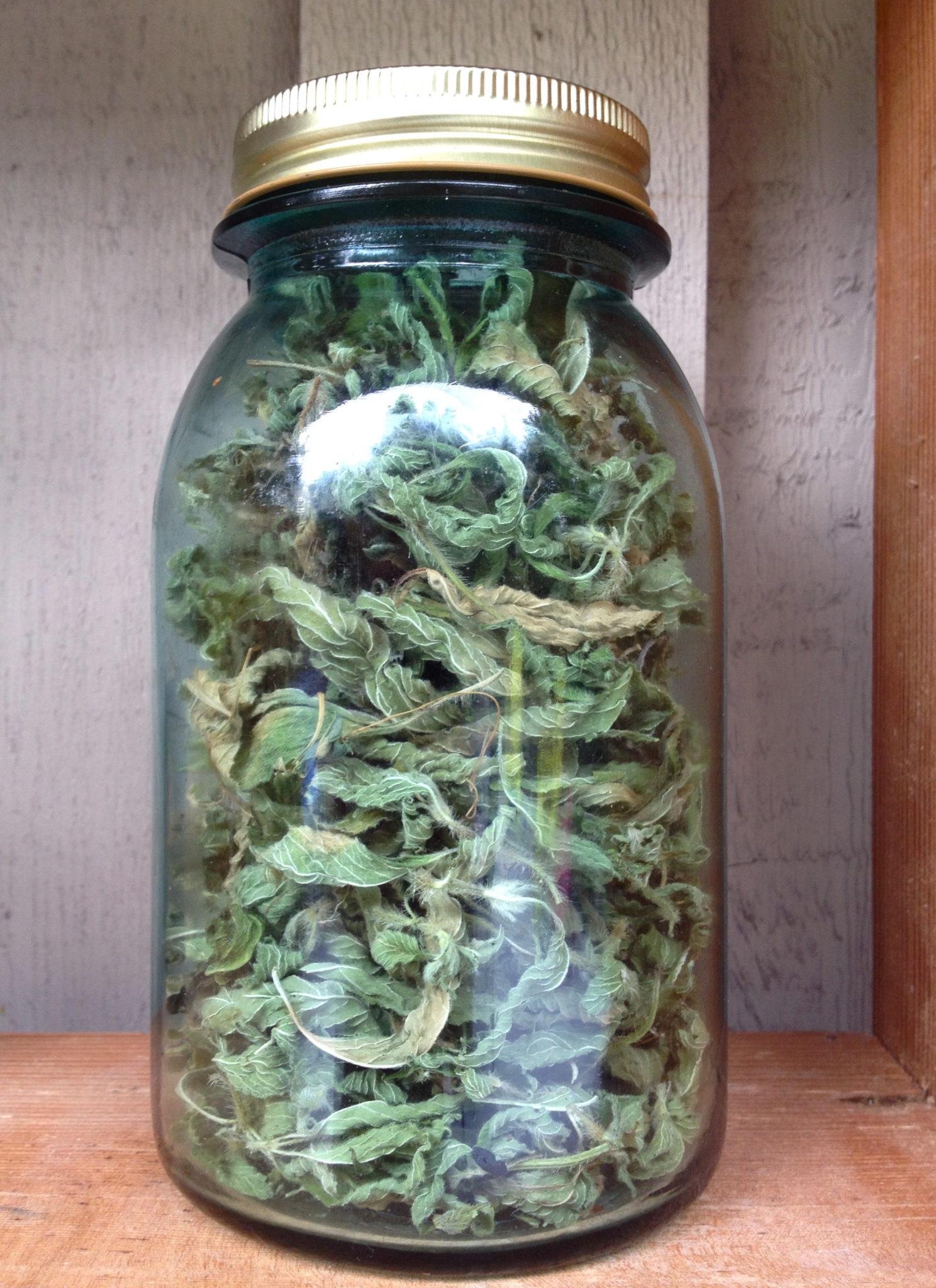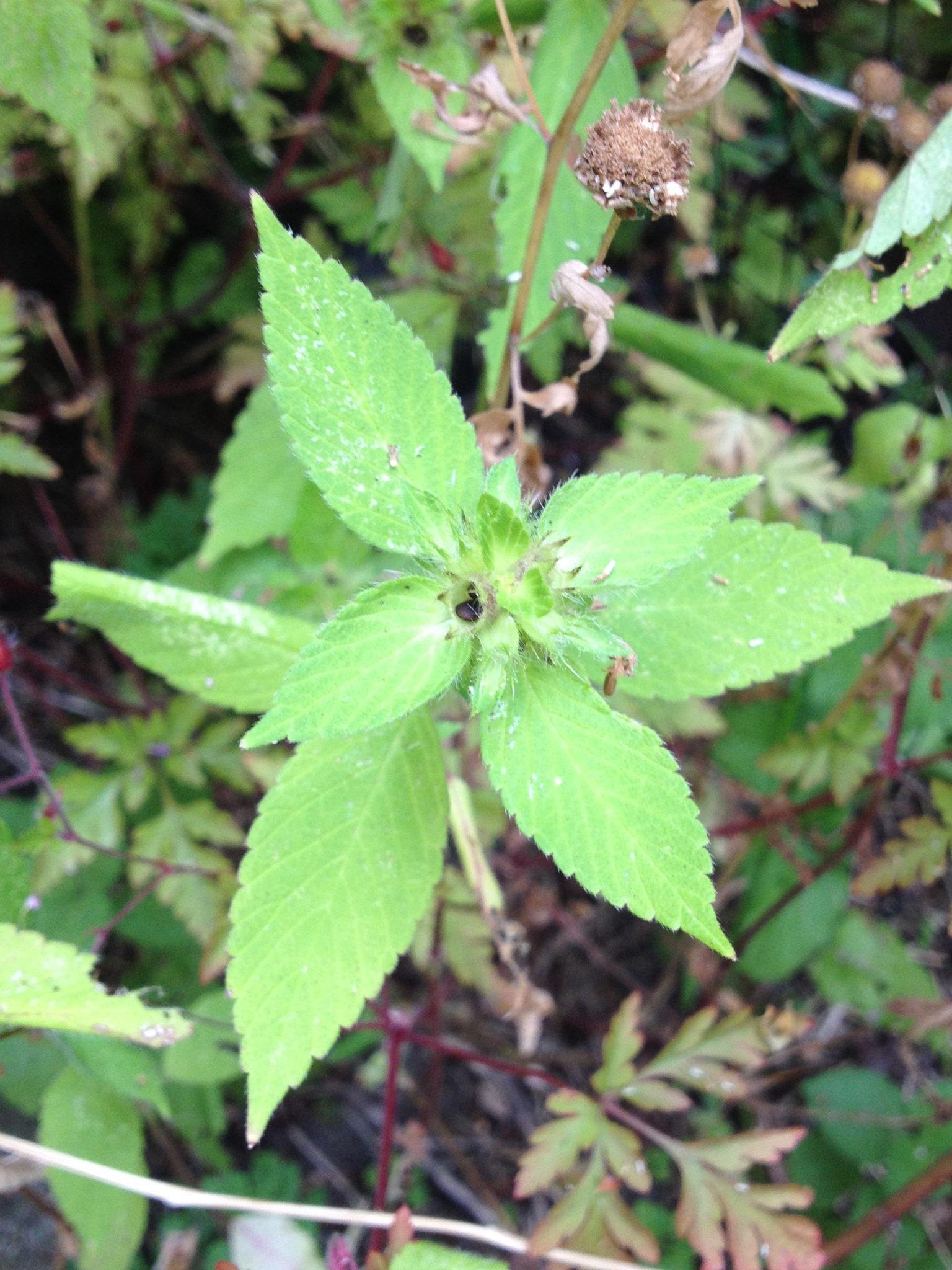How to Make Stinging Nettle Tincture
*This information is based on my own research and reading–I always encourage you to do your own research too. Consult your doctor if you are considering changing, or going off, any medication (read my full disclaimer/disclosure here.)*
Stinging nettle, another medicinal plant commonly grouped into the weed category, is known for its painful, sting and tendency to invade a garden. I don't have any growing in my yard, but fortunately, for me, my neighbor has (had) a ton! I think she was pretty confused when I excitedly asked her if I could pull them all out and keep them. Yes, I'm the "crazy neighbour."If you come across stinging nettle while weeding in your yard, make sure you throw on a pair of gloves before pulling them out. As their name suggests, they will sting you, as their many, tiny, sharp, needles, which are hollow and act like hypodermic needles, will inject you with a combination of acetylcholine, histamine, formic acid, 5-HT (serotonin) and more. Wilting, cooking and even drying stinging nettle, however, will "de-activate" the stingers.
Uses for Stinging Nettle
 Nutritionally, stinging nettle is high in calcium, iron, antioxidants, vitamins A, B, C, D & K, manganese, magnesium, and a good source of protein--all the more reason to cook with it! You can add it fresh to soups and sauces, as it tastes remarkably similar to spinach. Or, use it raw and make a pesto (mashing/muddling the fresh, nettle will kill the sting.) Due to it's remarkable medicinal properties, stinging nettle can also be dried for making teas and, of course, tinctures. You can also freeze it for later use.
Nutritionally, stinging nettle is high in calcium, iron, antioxidants, vitamins A, B, C, D & K, manganese, magnesium, and a good source of protein--all the more reason to cook with it! You can add it fresh to soups and sauces, as it tastes remarkably similar to spinach. Or, use it raw and make a pesto (mashing/muddling the fresh, nettle will kill the sting.) Due to it's remarkable medicinal properties, stinging nettle can also be dried for making teas and, of course, tinctures. You can also freeze it for later use.
Medicinal Properties
Stinging nettle has a long list of uses, however, below are a few of it's most common medicinal uses.
- Stinging nettle has been used for hundreds of years as a diuretic (to rid the body of excess fluids.)
- It can be used to treat bladder infection symptoms, like the constant urge to urinate.
- Studies have shown that taking stinging nettle internally can greatly decrease allergy symptoms, in particular, hay fever, seasonal allergies and hives.
- It can be used as a blood tonic, and help detoxify the liver.
- Stinging Nettle has been commonly used for joint and muscle pain and arthritis.
- It can be used to naturally help increase breast milk production.
How to Make a Stinging Nettle Tincture
If you haven’t yet, you may find it helpful to read week one’s post, Tinctures 101.
 Harvest young stinging nettle leaves, toward the top of the plant, before it flowers. Dry or wilt the leaves, then place them in a jar, and cover with 80-proof alcohol, like vodka, gun or rum.
Harvest young stinging nettle leaves, toward the top of the plant, before it flowers. Dry or wilt the leaves, then place them in a jar, and cover with 80-proof alcohol, like vodka, gun or rum.- Let the jar sit for 3-6 weeks, out of sunlight. Give it a shake every couple of days.
- Strain the mixture and transfer to a tincture bottle, or proceed to make a double-strength infusion.
- Take one adult dose, two droppers full, for any of the ailments listed above, 1-3 times per day.
*Tincture bottles are for sale locally (2 for $5), at Flo’s Body Piercing Studio (my mom), in Sechelt, B.C
